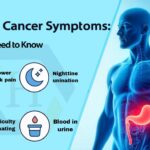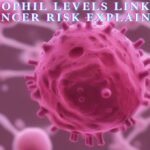Understanding ESR Levels in Cancer Patients: When it comes to cancer, understanding the ESR level is crucial for patients and their families. But what exactly is ESR, and how does it relate to cancer? Let’s break it down in simple terms.
ESR, or erythrocyte sedimentation rate, is a blood test that measures the rate at which red blood cells settle at the bottom of a tube over a specified period. Elevated ESR levels are often associated with inflammation in the body. In cancer patients, monitoring ESR levels becomes an important tool in assessing the disease’s progression and response to treatment.
High ESR levels in cancer patients can indicate various conditions, including the presence of inflammation caused by the cancer itself or as a response to treatments such as chemotherapy. Additionally, ESR levels may be influenced by factors like infection, anemia, or other inflammatory diseases.
Understanding ESR Levels in Cancer Patients
Regular monitoring of ESR levels allows healthcare professionals to track changes in a patient’s condition over time. A consistent rise in ESR may suggest worsening inflammation or progression of the cancer, prompting further investigation or adjustments to the treatment plan.
It’s essential for patients and their families to discuss ESR results with their healthcare team to gain a better understanding of their specific situation. While ESR levels are a valuable tool, they are just one piece of the puzzle in the comprehensive care of cancer patients. Open communication and collaboration between patients and healthcare providers play a crucial role in navigating the complexities of cancer treatment and management.”
Understanding Erythrocyte Sedimentation Rate (ESR) Levels
Erythrocyte Sedimentation Rate (ESR) is a valuable diagnostic tool that helps identify inflammation in the body. The results of an ESR test are influenced by factors such as the size and shape of red blood cells, blood protein levels, and the presence of inflammation. Let’s explore the spectrum of ESR levels:
| Age Group | Normal ESR (mm/hr) | Abnormal ESR (mm/hr) |
|---|---|---|
| Women 18-50 | 0-12 | >12 |
| Men 18-50 | 0-10 | >10 |
| Women 51-60 | 0-19 | >19 |
| Men 51-60 | 0-12 | >12 |
| Women 61-70 | 0-20 | >20 |
| Men 61-70 | 0-14 | >14 |
| Women 71-100 | 0-35 | >35 |
| Men 71-100 | 0-30 | >30 |
| Children (1 year) | 0-12 | >12 |
| Children (8-14 years) | 0-17 | >17 |
Understanding these ESR levels is crucial in assessing inflammation within the body. Normal and abnormal ranges can vary with age and gender. If you observe ESR levels outside the normal range, it is advisable to consult a healthcare professional for further evaluation and guidance.
By staying informed about your ESR levels, you take a proactive step towards maintaining your health. Always remember, regular check-ups and open communication with your healthcare provider contribute to a healthier, more informed lifestyle.
What is ESR?
ESR stands for erythrocyte sedimentation rate. It’s a blood test that helps measure inflammation in the body. While it’s not a specific test for cancer, changes in ESR levels can indicate that something’s going on, prompting further investigation.
Understanding ESR Levels in Cancer Patients

ESR and Cancer: What’s the Connection?
In cancer patients, elevated ESR levels might be a sign of inflammation caused by the cancer itself or other related conditions. However, it’s essential to note that many factors can influence ESR, so a high reading doesn’t automatically mean cancer.
Interpreting ESR Results
Your doctor will consider various factors when interpreting ESR results, such as your overall health, age, and existing medical conditions. It’s a piece of the puzzle rather than a definitive diagnosis.
Understanding ESR Levels in Cancer Patients
Why Monitor ESR in Cancer Patients?
Regular monitoring of ESR levels helps doctors track changes in inflammation over time. This information aids in assessing the effectiveness of cancer treatments and managing potential side effects.
What Can Affect ESR Levels?
Various factors, from infections to autoimmune disorders, can influence ESR levels. Understanding these factors is crucial for accurate interpretation and avoiding unnecessary concern.
Understanding ESR Levels in Cancer Patients
Conclusion: Empowering Patients with Knowledge
In the journey through cancer, knowledge is power. Understanding what ESR levels mean empowers patients to actively participate in their care. Remember, always consult with your healthcare team for personalized information and guidance.
Keep learning, stay informed, and take one step at a time on your path toward better health.
Understanding ESR Levels in Cancer Patients
FAQs About ESR Levels in Cancer Patients:
Q1: What is ESR, and why is it relevant in cancer patients?
A1: ESR stands for Erythrocyte Sedimentation Rate, a blood test that indicates inflammation. In cancer patients, elevated ESR levels may signify underlying health issues or response to treatment.
click here to know more about ESR
Q2: How often should cancer patients monitor their ESR levels?
A2: Monitoring frequency varies. It’s typically part of routine blood tests during cancer treatment. Consult with your healthcare team for personalized guidance.
Understanding ESR Levels in Cancer Patients
Q3: Can ESR levels alone diagnose cancer?
A3: No, ESR is a non-specific test. While elevated levels may indicate inflammation, a comprehensive diagnosis of cancer involves multiple tests and assessments.
Q4: What factors can influence ESR levels in cancer patients?
A4: Various factors, including infection, anemia, medications, and overall health status, can affect ESR levels in cancer patients.
Q5: Are there specific cancers associated with significant ESR changes?
A5: ESR changes are non-specific, but certain cancers or cancer-related conditions may contribute to elevated levels. Consult your healthcare provider for interpretation.
Q6: Can ESR levels help track cancer progression or remission?
A6: ESR trends may offer insights, but they are not the sole indicators. Other tests and imaging are crucial for assessing cancer progression or remission.
Q7: How can cancer patients maintain healthy ESR levels?
A7: Focus on overall health with a balanced diet, regular exercise, and adherence to prescribed treatments. Addressing underlying health issues helps maintain ESR within a normal range.
Understanding ESR Levels in Cancer Patients
Q8: Should changes in ESR levels be a cause for immediate concern?
A8: Not necessarily. Fluctuations can occur due to various reasons. Consult your healthcare team for a comprehensive evaluation before drawing conclusions.
Q9: Can lifestyle modifications impact ESR levels in cancer patients?
A9: Healthy lifestyle choices contribute to overall well-being, potentially influencing ESR levels indirectly. However, specific impacts can vary among individuals.
Q10: Are there medications that can affect ESR levels in cancer patients?
A10: Yes, certain medications can influence ESR. It’s crucial to inform your healthcare provider about all medications, including supplements.
Understanding ESR Levels in Cancer Patients
Viewer’s Note: Navigating Your Health Journey
The information provided is for general understanding. Individual health situations differ, and consulting healthcare professionals for personalized advice is recommended. Stay informed and proactive on your journey to better health.
🌿 Discover Wellness: Navigating Lymph Nodes for Health
Embark on a journey to understanding and optimizing your well-being with our comprehensive guide, “Your Wellness Guide: Navigating Lymph Nodes for Health.” Dive into the intricate world of lymph nodes and explore their pivotal role in maintaining health.
🔍 What’s Inside?
- Unravel the mysteries of lymphatic system function.
- Gain insights into the significance of lymph nodes for overall well-being.
- Learn practical tips for supporting lymphatic health in your daily life.
🌟 Why It Matters Understanding your body is the first step towards a healthier you. Our guide empowers you with knowledge about lymph nodes, allowing you to make informed choices for your wellness journey.
📖 Read Now: Your Wellness Guide: Navigating Lymph Nodes for Health🌐
Join us on this wellness exploration and elevate your health to new heights! 🌈✨









